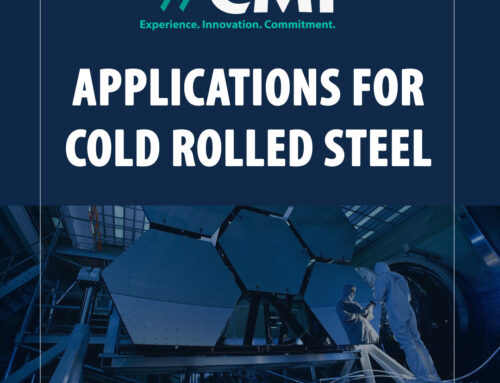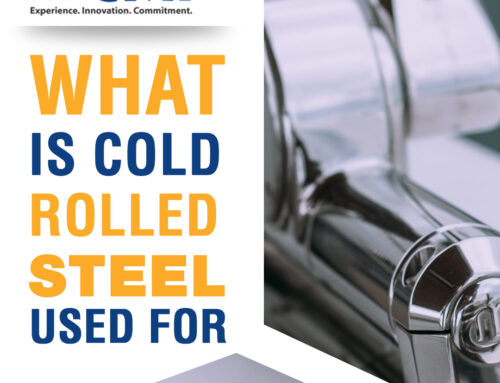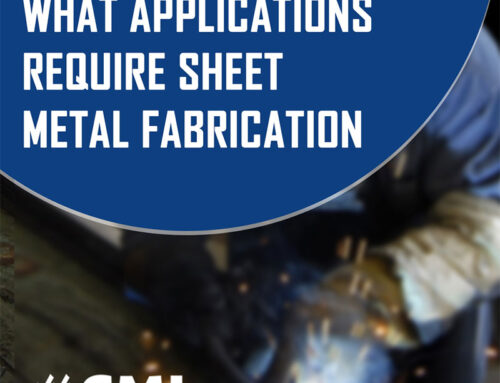
Cold Rolled Steel is a mill product created with a high degree of gauge precision and consistency of physical features. The smooth, deoxidized matte finish of Cold Rolled Steel provides an excellent substrate for enamel, lacquer, and paint. Without splitting, sheets bend flat on themselves. Because of how easy cold rolled steel is to work with and its amazing properties, it is used in various applications.
Surface oil is applied to a wide range of cold-rolled steel structures to prevent steel from rusting during warehousing and shipping. Because cold rolling of steel materials is prone to corrosion, it is usual practice to apply a rust-preventative oil at the temper mill’s outlet exit (the last processing step). Rust-preventive oils differ from forming lubricants in that they include corrosion-inhibiting additives.
In addition to the oil, you must maintain clean, dry surroundings in climate-controlled storage at all locations to ensure that the metallic surfaces do not show any signs of corrosion.
You’ll want to preserve your investment while starting a new steel project exposed to the elements. But, unfortunately, rust can weaken and even dissolve steel over time, making it one of its biggest adversaries.
There are various techniques to prevent rust on metal, but if you find rusted surfaces, you have several options to clean them. Continue reading to find out more about rust prevention and possible protective barriers.
Rust Prevention
Take preventative measures when your project is new to avoid a possibly lengthy removal process afterward. Rusting cold rolled steel is a big issue; let’s take a look at some of the ways you can prevent rusting of steel surface.
Keep It Dry
The most straightforward technique to prevent rust is to keep the steel clean and limit its contact with water. If you have a project, you’ll maintain it indoors, ensuring the environment isn’t too humid. Use a dehumidifier to store the steel in a moist environment, such as an unfinished basement.
You can’t avoid exposure to rain and snow if you have a fence, tank, or other projects that must sit outside, but you can maintain it as clean as possible. Wash off any debris, mud, or dirt regularly.
Keep Scratches at Bay
Steel scratches and pockmarks expose more of the surface to water and moisture. This exposure leads the steel to retain water for extended periods, increasing the likelihood of rusting. If feasible, keep sharp tools and heavy machinery away from your finished steel project.
Consider cold-rolled steel for a project subject to a lot of abuse. Cold-rolled steel has a smoother surface and is less prone to be scratched than hot-rolled steel.
Use a Protective Coating

It is recommended to use a commercial rust prevention agent to make your steel more moisture-resistant. These products come in various formats, including wipes and aerosol sprays. The chemicals used for protection against rust are ideal for smaller projects like outdoor equipment, tools, and gates.
Powder coating more oversized steel products is an option. These organic coatings come in vinyl, urethane, epoxy, nylon, and acrylic varieties and work by building a protective layer around the steel to keep moisture out.
Does Cold Rolled Steel Rust: Get Rid of Rust

To prevent rust from getting worse, you should clean it off as soon as you notice it. So let’s look at ways to remove rust from cold rolled steel.
Use a Chemical Rust Remover
You should apply a chemical rust remover if your steel is highly corroded. These materials are combined in such a way that they eliminate rust while leaving your finish intact. Rust removers come in two common forms: liquid and gel. Although a liquid form of rust remover is easy to apply, gel is the greatest option for vertical surfaces where the liquid would run off.
Most rust removers take a long time to work and may necessitate scraping particularly thick layers off with a putty knife or chisel to clean the steel properly. Therefore, these are best for those things that only have surface rust, where the rust hasn’t taken a great hold on the material and has gotten deep into the product.
Physically Remove the Rust
The most straightforward approach to reducing pockmarks in rusted objects that show through paint is to remove the rust by grinding or scouring it away. Steel wool or coarse-grit sandpaper may sometimes be used to remove rust. This is especially important if it is only on the surface and has yet to get too deep into the metal surface.
First, remove all pockmarks and corrosion. Then, using fine-grain sandpaper, smooth out any divots or scratches in the steel.
Larger rust patches may necessitate a wire brush attached to a power drill to scour away. Use a grinder only when necessary, and keep it moving as you move it over the steel – letting the grinder sit in one spot can permanently harm the metallic objects and even puncture a hole.
Make Use of Galvanized Steel.
Liquid Zinc coating covers galvanized steel surface, which is a barrier of oxygen and water. When exposed to oxygen, the zinc combines to form stable zinc oxides. If the galvanized coating is rubbed off in small sections, the surrounding portions will be better protected than if galvanized steel was not used.
Why Choose Cold Rolled Steel
Cold-rolled sheet materials have been available for years and have been utilized successfully in a variety of applications. Cold-rolled sheet products are far superior to those used in the past. They provide improved surface finish, width, form, and thickness control. They are a superior product for those looking for a material with amazing attributes that conform to many applications. Cold Rolled steel is the perfect choice for products that need tight tolerances. Let’s take a look at some of the applications you might find cold-rolled stainless steel used for:
- Advantages of Cold Rolled Steel
- Parts that have been exposed as well as parts that have not been exposed
- The excellent form control (flatness)
- Formability to a high degree
- Thickness tolerances are extremely tight.
- A consistent surface finish
- Products made of tubing
- Toolboxes
- Doors
- Furniture
- Shelving
- Manufacturing of drums
- Plumbing fittings
- Electric motors
- Automobiles
- Appliances
What Are Three Advantages of Cold Rolled Steel

- Cold-rolled steel has a tighter tolerance, allowing it to be rolled up to 50% thinner.
- Exceptional finish.
- Cold-rolled steel has a 20% higher strength than hot-rolled steel.








![Ballistic Materials: All You Need To Know [2022]](https://custommaterials.com/wp-content/uploads/2022/05/featured-image-Balistic-Materials-500x383.jpg?x26279)